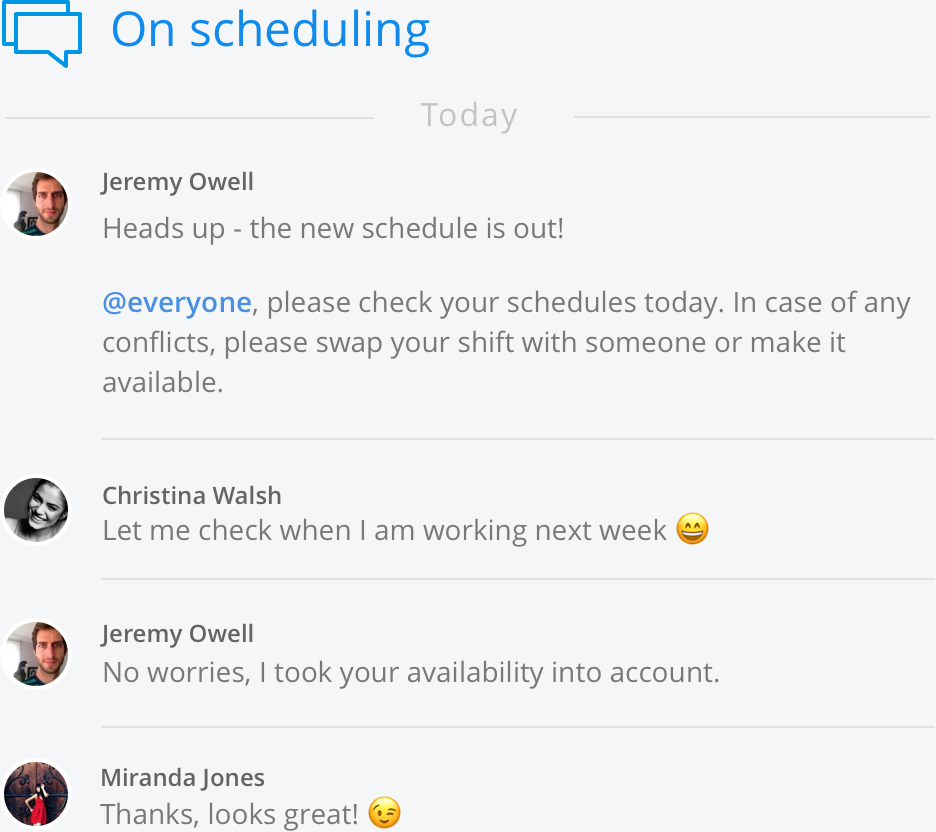How To Find A Seasonal Job And Get Hired
Seasonal jobs aren’t just for high-school and college students anymore. Many a...

It’s a fact of business that certain times of the year are busier than others. For retail in the United States, that time of the year is the end of November through the end of December. For restaurants, the busy time of the year may be the summer months, with business falling off as the weather gets colder. These industry-specific seasons bring with them increased activity, yes, but they also bring with them the need for more employees to handle the rush. And with all those hires comes the inevitability of seasonal unemployment.
That’s not a bad thing, but it raises the questions:
Those aren’t the only questions but they are at the top of every manager’s list during the busy season. To help you find answers that work for your business, the experts at Sling have created this guide that will show you how to navigate the ups and downs of seasonal unemployment. Along the way, we’ll answer the four questions mentioned above and touch on several other issues relevant to managing seasonal employees. Let’s get started!

First and foremost, the seasonal rise and fall of your business should not come as any surprise. There is literally reams of data available that analyzes the ebb and flow of every niche from retail to restaurants to road work. Even if you only have a rough idea that your business’s busy season is in spring, for instance, that still gives you a three-month period of time to prepare for. The key thing from this moment on is to track everything from sales to customers through the door and everything in between. When you’ve accumulated all that data for a year, it will show you a more accurate picture of how your business lives and breathes. If you continue to track all that data (and you should), you’ll be able to pinpoint when the busy seasons start and end with a higher degree of accuracy.

Once you’ve got the data in hand, or even just that rough idea that your busy time starts in March, plan right away. Based on the information you collected, how many seasonal employees will you need to hire to keep things running smoothly? What will you need those employees to do? What will you have your existing employees do while the seasonal employees are doing what they do? Which shifts should the seasonal workers work? We’ll talk about scheduling in a bit more detail below. But for now it’s important to know all of these questions need to be answered and a plan put in place well before the busy season arrives.
That brings us to the next pertinent question: When should you start putting your plan into action?
The simple answer is start early. One of the easiest ways to find workers for increased seasonal activity, is to enlist the aid of your part-time staff. Bump them up to full-time status or just give them more hours. This isn’t the only solution, of course, but it is a great place to start. The nice thing about pulling from your part-time employees is that you know they’re already trained and can do the jobs you need them to do.

Once you’ve got a plan for your full-time and part-time-now-full-time employees, you can see what you will need to cover your bases during the busy season. When you know how many and for what jobs, you can begin your search. And again, start the process early.
If your busy time of year is the Christmas holiday, don’t wait until the middle of November to start your employee search. That’s too late and you’re already behind the eight ball. A good rule of thumb is to start your seasonal employee search three months before you’ll need them. So if you need seasonal workers from Black Friday through the end of the year, you should start hiring at the beginning of September (or even the end of August).
This three-month lead time gives you and the new employees plenty of time to see:
At this point, you may be wondering what to do with these seasonal workers for the two or three months before things get busy. The answer: make them part of your part-time staff. It helps to think of your employee needs as different levels. At the top you have your full-time employees. The next level down you have your part-time employees. The next level down you have your seasonal workers. You already know you’re going to move your part-time workers up to the full-time level by end of November. Your seasonal workers will then occupy the part-time level for a few weeks or months.
To help everyone get used to this new structure before it kicks in, start bumping people up a level in October, for example. Rotate some part-timers into full-time positions. Then integrate the new hires into the part-time ranks to get trained and so they can gain experience.
Letting people go is never easy, but you can reduce the strain on you and the employee by making it known up front you are hiring them for a temporary position. You can (and should) even give them an end date when you interview them. This will help prepare them right from the start that the end is approaching so there are no surprises in the end. Come the first week in January, there will be less surprise and less hurt feelings.

It’s also a good idea to provide them with the possibility that, if they do a great job, they may be offered a regular position (be it part-time or full-time). That makes the prospect of being let go that much easier because there’s always the possibility they won’t be let go. All of this taken together can help reduce the sting of seasonal unemployment.
One of the nice things about hiring seasonal workers is that you may just find your next part-time, or even full-time, employee. Seasonal work is like an extended job interview—a trial by fire, if you will. If a seasonal worker shines during the busiest time of the year when the stress is high, how much better will she do when the pressure is off? Take the opportunity to analyze each employee (new-hire and old-timer alike) and evaluate their performance. Don’t be afraid to shuffle things up come the end of the busy season. Maybe that means letting a full-time employee go, moving a regular part-timer to full-time status, or even bringing a seasonal hire right up to full-time status.
For the seasonal employees you have to let go, make it clear on their last day you will keep their name for future reference. You never know when a space will open up, but you’ll be prepared when it does. Contacting previous seasonal employees is a quick way to fill a position because you know they’ve already been trained and that they can do the job correctly.
Scheduling your regular employees is hard enough. Add in several seasonal employees and you’ve got yourself a chaotic scheduling mess on your hands. The best way to bring order to that chaos is by using scheduling software like Sling.

With Sling, you can set up shift schedules, manage time off, availability, and shift-trade requests. Sling even provides suggestions for better scheduling and notifies you when you’ve scheduled someone who should be off or double-booked an employee.

Sling also makes it easy to distribute the schedule and stay in touch. When you post your completed schedule to the cloud, Sling notifies all employees with a push notification. Those employees can then access the schedule anytime, anywhere. You can even set Sling to send out reminders of upcoming shifts, or the need for a substitute, so you can cut down on absenteeism. And that’s only the tip of the Sling iceberg.
With Sling’s four main features—shifts, messages, newsfeed, and tasks—there are countless ways the app can make your scheduling life easier. So don’t let seasonal employees clutter up your scheduling time. Get in, make the schedule, and get out so you can devote your time to keeping your business running, even during the busiest time of the year. Sling can do that for you.
See Here For Last Updated Dates: Link
This content is for informational purposes and is not intended as legal, tax, HR, or any other professional advice. Please contact an attorney or other professional for specific advice.
Schedule faster, communicate better, get things done.